

“Talk is cheap.” This is a common idiomatic expression, at least here in the States. While these might be words to live by, they are also words to write by. Dialogue can make or break story. It can make a ‘meh’ story concept shine or tank a superlative story idea.
Talk, or lack thereof, is therefore crucial.
I strongly recommend every serious writer buy then STUDY Robert McKee’s book, Dialogue: The Art of Verbal Action for the Page, Stage, and Screen.
McKee defines dialogue as, “Any words said to any character by anyone.”
He also states:
All talk responds to a need, engages a purpose and performs an action. No matter how seemingly vague or airy a speech may be, no character ever talks to anyone, even to himself, for no reason, to do nothing.
McKee, Page 3
In McKee’s book, he explains how novelists wield far more creative power than stage or screen writing. When we write what is called the ‘narrative,’ this counts as a form of dialogue. It is talk between the POV (Point of View) character and the reader.
Novelists can truly BE gods of their own worlds.
Author God


While other ‘artists’ use paint, clay or other physical, tangible materials to ‘create,’ writing is completely abstract (particularly in short stories and novels).
Writers use various combinations of 26 letters to create characters that feel so alive, audiences can very literally go into a sort of depression when a story or series ends.
Authors create new worlds, languages, religions, dimensions, creatures and PEOPLE that have never existed all solely using various combinations of letters. And, frankly I’d say we have more like 23 letters since Q, X, and Z are all but useless most of the time.
We can use ‘talk’ to inform, disrupt, distract, enlighten, or even misdirect. Thus, today, I’d like for us to explore the purpose of dialogue.
How can we use ‘talk’ wisely? In the interest of time, today we’ll look at some of what spoken dialogue can and should do and cover writing the narrative another day.
Dialogue and Characterization
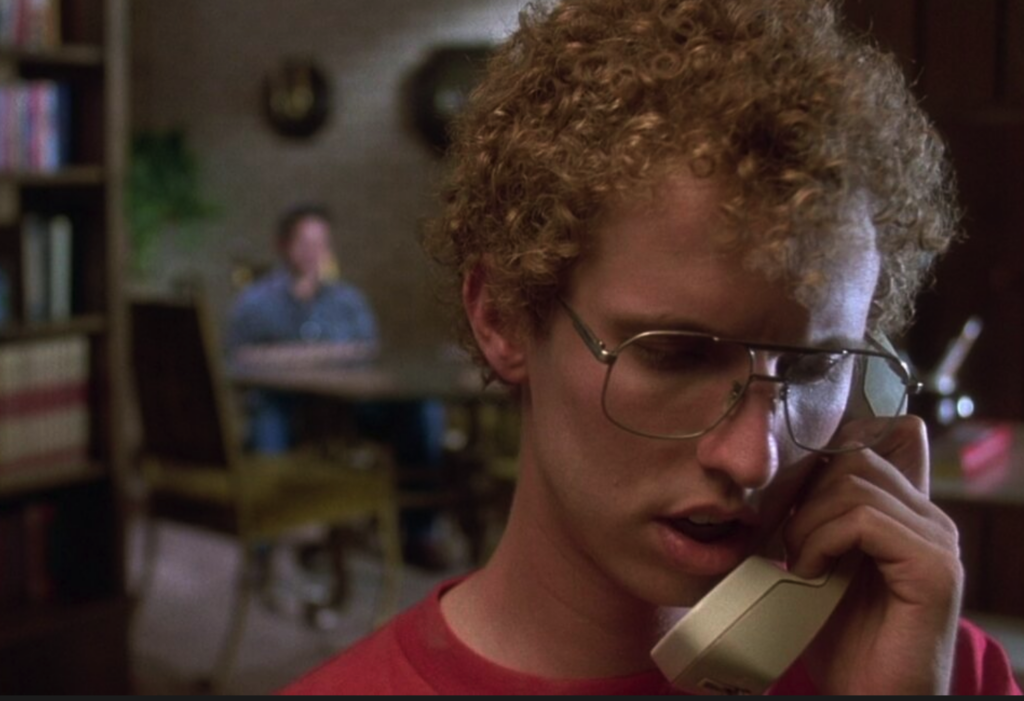

The most obvious use for spoken dialogue is that it defines, deepens, and distinguishes each character. We can use vocabulary, idiomatic expressions, and subtext to inform the audience without spoon-feeding them as if they’re stupid.
Dialogue is one of the many ways we, as writer god, can craft human beings with loves, loss, and layers simply by crafting how they speak (or don’t).
Talk, Vocabulary & Subtext
Whether in speaking dialogue or narration (thinking), vocabulary is critical. Vocabulary is a treasure trove of information How a character talks can reveal age, where the character is from, belief systems, educational level, background, vocation, interests and more.
In the first example I’ll riff a section of dialogue and layer in subtext (what is being said without being said) which leaves gaps for the audience to fill in the blanks.
Example One:
“Lord, it is hotter than the hammered hinges of hell out here. You think Delroy’s really stupid enough to hole up at his mama’s place again?”
“I know he is.”
“Well, la-dee-dah, aren’t we confident?”
“There is a vast difference between confidence and certainty. Your Delroy believes his laptop has been totally wiped. Yet, data can never truly be destroyed, at least not for those of us trained in the art of resurrection.”
“Great. Since I’m sweating my balls off, maybe you can turn this here water into a cold beer.”
“Don’t be pedantic.”
“Not paid enough to be. Only paid for small words.”
“Clearly.”
“That and to collar inbreds who diddle with kids on-line. And, you know, to make sure they don’t accidentally get hurt too bad on their way to booking.”
“I’ll pretend you didn’t just say that.”
Talk Analysis


Now, I have not named either of these characters but do you see all the information we can mine from how each person talks? This snippet of banter informs us we are probably in the American rural South.
Character One
We know this from the Character One’s colorful description of the heat, the name ‘Delroy,’ his use of the idiom ‘holed up’ and the descriptors of ‘his mama’s place,’ ‘inbreds,’ ‘diddle,’ etc.
It’s also fair to assume Character One is male, since he’s ‘sweating off’ a uniquely male part of human anatomy. The audience might also glean that this character goes to church or has a history of church attendance because of his jab to his braggart partner about turning his water into a cold beer (a clear reference to Jesus turning water into wine) in reaction to the partner using the word ‘resurrection.’
He isn’t a die-hard religious man, but he is schooled enough in the faith to cleverly banter.
The first character seems affable and self-deprecating, since he’s only ‘paid for small words.’ We also get a sense that he has a very fluid sense of right and wrong. There is by the book (arrest a pedophile) and by HIS book (he hints Delroy might have some ‘accidents’ on the way to the station).
There’s also a suggestion Delroy is a repeat offender since Character One clearly states, “holed up at his mama’s place again.” We can infer then, that this isn’t Delroy’s first run in with the law.
Character One uses the word ‘collar’ and ‘booking.’ This is law enforcement vernacular.
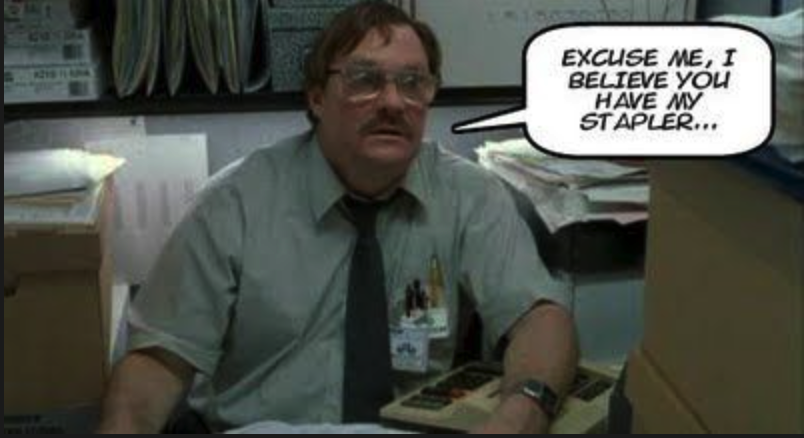

Character Two (in BLUE)
The second character is, from all indications, far less emotive. This character is obviously highly educated, expertly trained with computers, and confident almost to the point of bravado.
Since the second character only uses two contractions, this could point to English as a second language or simply a stiff/formal personality.
Also notice this character refers to the suspect as “Your Delroy” which intimates this character is an outsider possibly new to the area or at least brought in to assist. Talk indicates this person doesn’t identify with the community.
We also get a peek at Character Two’s moral compass as well. He (or she) doesn’t directly challenge Character One when he hints at being rough with the suspect, merely claims neutrality on the matter.
Maybe this person is the type to look the other way, or maybe this is a gentle hint to Character One that he’s been warned that Character Two doesn’t like that kind of nonsense and could possibly report any unsanctioned behavior.
With dialogue, we can also guess that the pair are probably on a stakeout and at least one if not both are members of law enforcement.
See HOW MUCH we are able to mine out of fewer than 150 words of dialogue? We get setting (hot), location (rural South), vocation, education, moral compass, objective, background, etc. etc.
Talk & Holding the Reader’s Brain


In this next example, I’ll write the same scenario, but remove all the subtext.
“Texas summers are really brutal. It must be a hundred and ten degrees outside. I can’t believe we’re having to wait on our suspected pedophile to show his face. Surely he isn’t dumb enough to hide at his mother’s trailer. That’s where I arrested him the past three times. Are you sure your computer skills are good enough to be sure he’s here?”
“I am certain he at this location. I graduated top of my class at MIT. Pawn shops only wipe enough personal data for a laptop to be resold. By downloading a recovery program, I was able to reconstruct not only his last emails to his buyer, but I could re-pixelate the child pornography he is trying to sell today. His pawn shop friends really didn’t clean his computer totally. All the evidence is still there.”
“Geeks who sit at a desk aren’t real cops. I’m still not sure you know what you’re doing.”
Okay, I am stopping here because I can’t stand anymore, and I believe that’s enough to make my point.
Editors have the mantra, “Show don’t tell” and this can be used in the narrative, but it can also apply to dialogue. Alexa could have crafted this dialogue it is so devoid of humanity.
Yet, as an editor and avid reader, I cannot tell you HOW OFTEN I see dialogue like this. It’s stiff, contrived, and leaves no room for the imagination.
Good Talk vs. Bad Talk
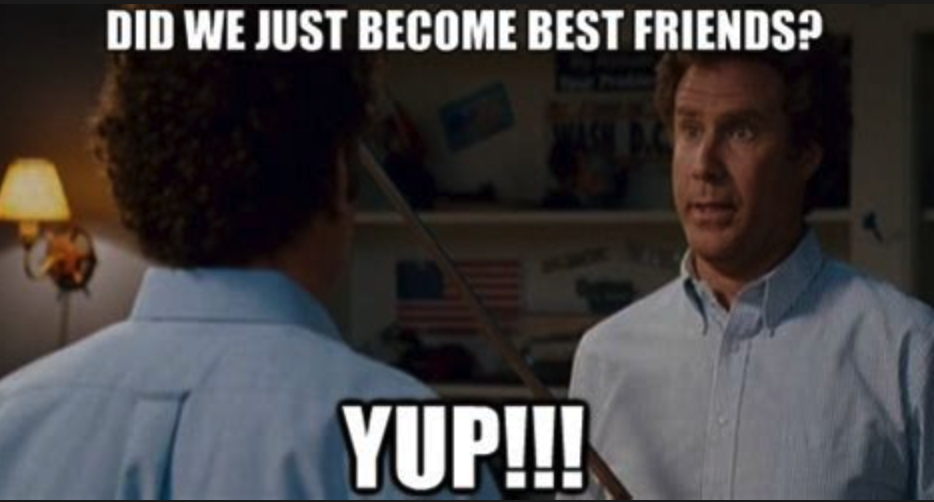

What determines the quality of spoken dialogue? Writing quality, to a degree, is subjective. One could reasonably say the same about dialogue.
Quentin Tarantino fans don’t care his characters use so much profanity they leave sailors clutching their pearls. Me? When the F word is every part of speech? It’s too much and, over time, detracts from the story.
But that’s just me. Tarantino’s excessive use of profanity, however, is a style choice and isn’t what I’d deem as ‘bad’ or ‘amateurish’ dialogue.
Obviously, if you want the full deep-dive about dialogue, get the book I recommended. We can only cover so much in a blog post.
One of the reasons I suggest at least doing a log-line ahead of time is because then we know the ideal characters to cast, how they’ll need to arc, what they are likely to resist, and, most importantly…the ultimate objective.
How does the story end?
If we know these critical pieces of information, then dialogue becomes much easier.
In my made-up dialogue, what is the scene objective? To arrest Delroy. This informs what my ‘characters’ then talk about. I can also inject tension. Character One isn’t so certain his computer nerd partner has it right and for all he (or the reader knows), this could be a miserable waste of time.
Dialogue hooks the reader because we want to know which speaker is correct. I could end the scene any way I want. Delroy might be inbred, but he is after all, a repeat offender. Maybe this is a decoy.
Maybe the reader expects they’ll arrest Delroy, but then I flip their expectations upside down and they’re both wrong. Delroy is a victim, a patsy they find dead. Someone even better at computers set him up…but who?
Suffice to say, when we know how our story ends, we up with much less ‘filler’ and wasted dialogue that does little more than pads the word count.
Remember How People Talk
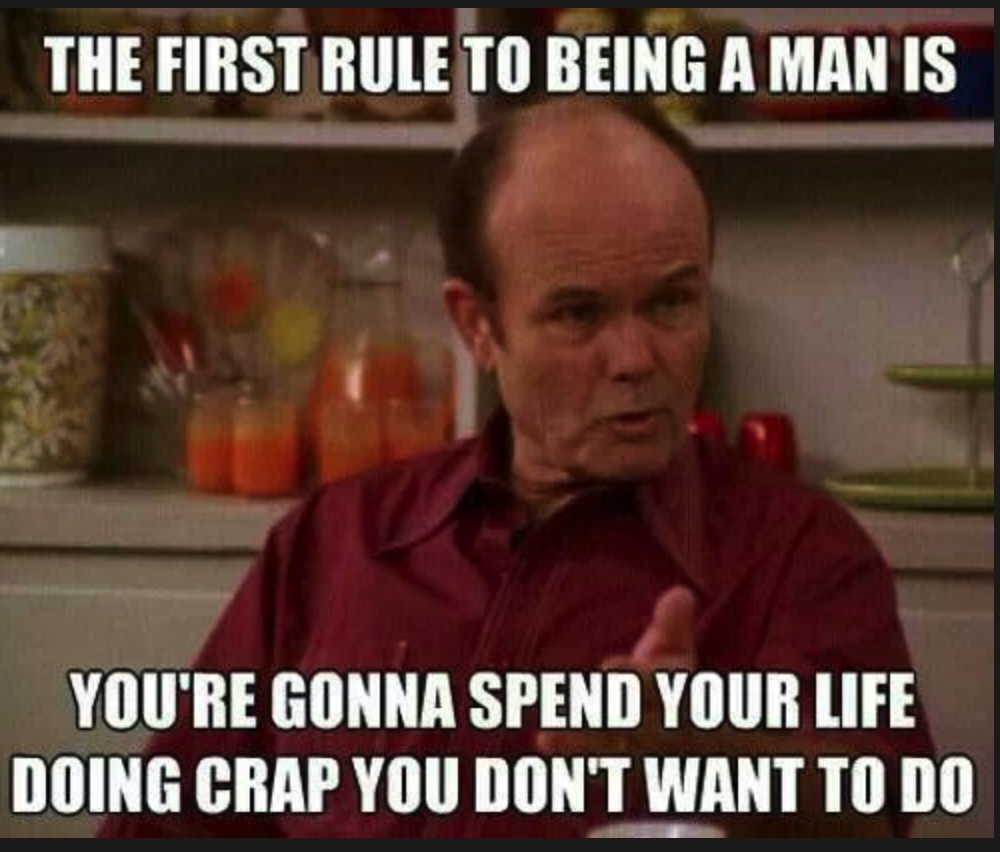

I’m a notorious eavesdropper. I study HOW people talk and how they DO NOT talk. Granted there are always exceptions, but here are some tips.
By and large, people don’t call each other by name when having a conversation.
“Hey, Julie, how is your son Aiden doing at Middlebrook Elementary?“
“Well, Danielle, Aiden is doing much better since he left Green River Elementary.“
“Oh, Julie, that’s so good to hear.“
WHO TALKS LIKE THIS? Robots. Robots talk like this.
Unless we’re flagging someone down trying to get their attention, we generally don’t use their name. We certainly don’t keep using it
People don’t rehash commonly known information.
This is called, “As you know, Bob” dialogue.
“Julie, as you know, Aiden was diagnosed with severe autism two years ago, which was why my husband, Tom and I, had to change where he went to school.”
Most of the time, people don’t speak in complete and grammatically correct sentences.
Unless this is a unique affectation (E.g. the character Data from Star Trek), don’t feel the need for every character to speak perfectly and in complete sentences.
In conversation, usually one person won’t speak more than three sentences.
They CAN, just if we have them go on monologuing too frequently, it sounds weird (refer to Example Two above). When you see you have a LOT of sentences, that’s a good clue you might be trying to hold the reader’s brain and are using dialogue to dump information.
A great trick of the trade is to read your dialogue aloud (without tags) to another person. If you stumble over places, then smooth out the wording. See if the person listening can tell your characters apart simply by they way they talk.
Remember, speech patterns, vocabulary, pace, etc. can do more to distinguish characters than all the physical description we might want to lavish on every character. We’ll remember their dialogue long after we’ve forgotten eye color and hair color.
Talk Saves Us Description
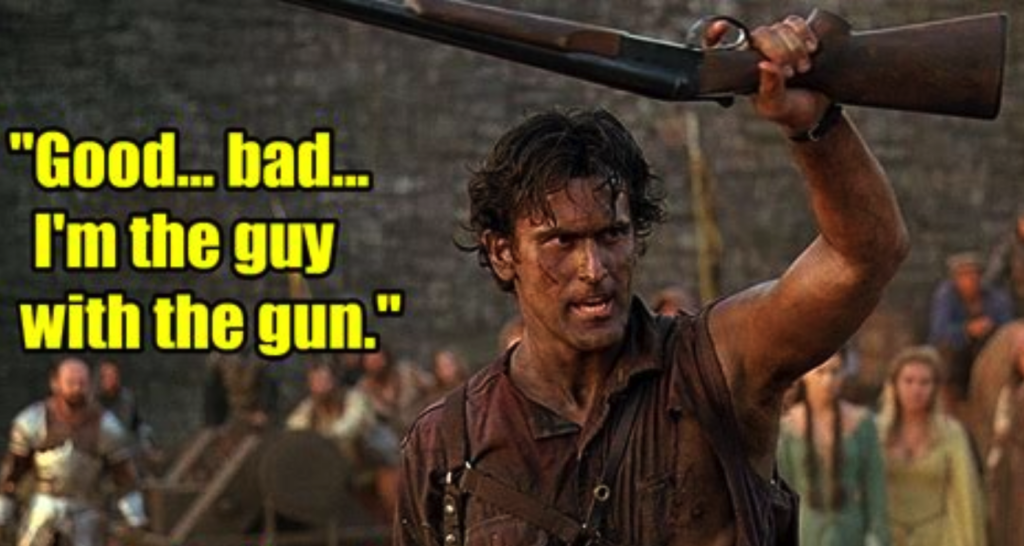

I LOVE pretty prose as much as the next lexiphile, but dialogue is so much more revealing.
“If you need a friend, get a dog.”
“Bogus. Heinous. Most non-triumphant. Ah, Ted, don’t be dead, dude.”
“Never thought I’d die fighting side by side with an Elf.”
“Cause Chevy didn’t make a 327 in ’55, the 327 didn’t come out till ’62. And it wasn’t offered in the Bel Air with a four-barrel carb till ’64. However, in 1964, the correct ignition timing would be four degrees before top-dead-center.“
I chose four vastly different characters. But, can’t you just envision the types of people who’d speak this way? Even if you don’t KNOW the first is Gordon Gekko from Wall Street, you still know this character is blunt, cold and doesn’t waste time with feelings.
Would I NEED to slather on a paragraph describing surfer dudes after that line from Bill & Ted’s Excellent Adventure?
This third example might not jump out right away, but I don’t even need to explain this is from a fantasy because of word choice. It is the dwarf, Gimli, from The Return of the King. We GET it is a fantasy and don’t need to wax rhapsodic describing how dwarves and elves have been long-time enemies. Dialogue accomplishes this with a couple words.
And #4? I threw that in for fun. Who can guess the character?
What Are Your Thoughts on TALK?
What are your favorite quotes? Lines from screen, stage or screen? Do you see how powerful a tool dialogue can be? Does this give you ideas how to tweak how your characters speak?
I love hearing from you, and I am NOT above BRIBERY!
What do you WIN? For the month of DECEMBER, for everyone who leaves a comment, I will put your name in a hat. If you comment and link back to my blog on your blog, you get your name in the hat twice.
What do you win?
The unvarnished truth from yours truly. I will pick a winner once a month and it will be a critique of the first 20 pages of your novel, or your query letter, or your synopsis (5 pages or less).
***We will be loading fresh classes for 2022 soon.
Classes
The Edge: How to Write Mystery, Suspense & Thriller is available ON DEMAND (sign up HERE and use Thrill10 for $10 off). The recording turned out FANTASTIC, so check it out.
